鑽石 4C 是什麼?
Title:普遍公認的 4C 標準是鑽石世界的指路明燈,有助於判定每顆鑽石的品質和價值──4C 代表顏色、切割、克拉和淨度。Swarovski Created Diamonds的培育鑽石均由IGI國際寶石研究院的 4C 標準進行分級。這些系列的培育鑽石具有相當優良的品質:顏色為 G+,淨度為 VS+。
淨度原則和要素
Title:
培育鑽石的淨度是根據其瑕疵來判斷的,瑕疵是指賦予鑽石獨特個性和魅力的內含物和瑕疵。下面將探索更多關於鑽石淨度的資訊。
I.F.
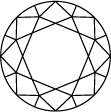
內無瑕
VVS 1
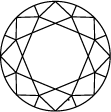
VVS 2
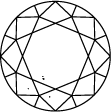
極微內含物
VS 1
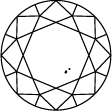
VS 2
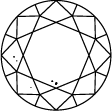
很輕微內含物
SI 1
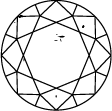
SI 2

微內含物
I 1

I 2
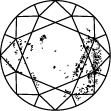
I 3
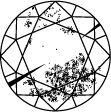
有明顯內含物
鑽石淨度表
Title:鑽石淨度等級
Subtitle:
鑽石淨度等級從 IF 到 I 3,是根據每顆鑽石中發現的內含物和瑕疵的數量來劃分的。鑽石淨度等級是在 10 倍放大鏡的標準觀察條件下判定的;IF 等級代表內無瑕的鑽石,而在鑽石淨度等級表的另一端,I 3 等級代表含有肉眼可見的瑕疵。真正無瑕的鑽石極為罕見,幾乎所有的鑽石都或多或少有內含物,包括培育鑽石。
切割原則和要素
Title:
培育鑽石的切割品質取決於其比例、對稱性和拋光。專業的切割工藝會創造出多個切割面,吸收並反射光線,使鑽石從各個角度都能閃閃發光。
無色

D-F
近無色
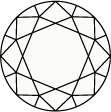
G-J
略帶色調

K-M
極淺顏色

N-R
淺色

S-Z
鑽石顏色等級圖表
鑽石顏色的等級從 D 到 Z 不等,D 級為清澈的冰白色,沒有一絲黃色,而 Z 級為黃色和棕色。圖表上的每個字母範圍表示鑽石的色調,D 到 F 級為無色,S 到 Z 級為淺黃色或棕色。Swarovski 只接受優質的培育鑽石作為其產品系列的原料,這表示我們採用的鑽石從無色到近無色 (D-G) 不等。
顏色原則和要素
Title:
無色鑽石是世界上最受歡迎的鑽石,而且極為稀有。Swarovski Created Diamonds 是根據標準的鑽石顏色等級進行評估的。

2.5 mm
0.05 CT

3.0 mm
0.10 CT

3.8 mm
0.20 CT

4.5 mm
0.30 CT

4.8 mm
0.40 CT

5.2 mm
0.50 CT

5.8 mm
0.70 CT

6.3 mm
0.90 CT

6.5 mm
1.00 CT

6.9 mm
1.25 CT

7.4 mm
1.50 CT

7.8 mm
1.75 CT

8.2 mm
2.00 CT

8.8 mm
2.50 CT

9.4 mm
3.00 CT
鑽石克拉重量
Title:培育鑽石克拉
Subtitle:
克拉 (carat) 是由「carob 」這個字演變而來,它的意思是種子,在以前的時代,商人們用這種種子當作鑽石重量的參考。克拉是衡量鑽石重量的國際標準單位。一克拉等於 200 毫克,因此 5 克拉的鑽石重量為 1 克。鑽石的克拉並不是指鑽石的大小,而是指鑽石的重量。通常克拉愈大,鑽石的價格則愈昂貴。
探索 Swarovski Created Diamonds
盡在 Swarovski Created Diamonds
Title:培育鑽石
Subtitle:
探索 Swarovski Created Diamonds 首飾的世界,以融合傳統與現代潮流的非凡系列,重新定義鑽石的未來。從璀璨奪目的 Galaxy 系列,到我們優雅的標誌性作品,您一定能找到適合終生佩戴的款式。
培育鑽石購買指南
Title:搜尋作品
Subtitle:
Swarovski Created Diamonds 首飾是採用培育鑽石,是我們品牌 DNA 自然發展的結果,精工切割,色澤璀璨,除來源外,與開採出來的鑽石在其他方面完全相同。它們由鑽石種晶層層疊加形成,充分展現大自然的光芒。
培育鑽石是什麼?
Title:培育鑽石的解釋
Subtitle:
了解更多關於培育鑽石的資訊,以及如何複製鑽石在地球上形成的過程。探索 Swarovski Created Diamonds中不同切割方式的培育鑽石,以及設計背後的靈感來源。
常見問題
鑽石 4C FAQ
4C 是什麼?
每一顆鑽石都略有不同,都有各自的顯著特徵。培育鑽石除來源外與開採的鑽石在其他方面無異,因此我們的培育鑽石也是根據鑽石分級的 4C 標準進行評估。4C 是指顏色、淨度、切割和克拉重量,是全球公認的評估鑽石品質的標準。
鑽石淨度重要嗎?
淨度分級越高,鑽石的內含物或瑕疵就越少,其價值也就比分級低的鑽石高。
什麼是最高的鑽石淨度?
鑽石淨度是根據內含物和瑕疵這兩種特徵的可見度來衡量鑽石純淨度的等級。
為評估淨度,鑽石要在 10 倍的放大鏡下進行檢查。外部 (瑕疵) 和內部特徵 (內含物) 的數量和性質,以及它們的大小和位置,決定了鑽石的等級。
寶石學家對鑽石進行了分級,從最高品質的內無瑕 (IF) 到內含物 (I3) 。
為評估淨度,鑽石要在 10 倍的放大鏡下進行檢查。外部 (瑕疵) 和內部特徵 (內含物) 的數量和性質,以及它們的大小和位置,決定了鑽石的等級。
寶石學家對鑽石進行了分級,從最高品質的內無瑕 (IF) 到內含物 (I3) 。
培育鑽石是完美無瑕的嗎?
不是,幾乎所有的鑽石 (開採的或實驗室培育的) 都有內含物。培育鑽石可能會含有金屬雜質。如果專家在鑽石中發現金屬痕跡,便可以假定這是培育鑽石。雖然培育的鑽石確實存在瑕疵,但 Swarovski Galaxy 系列只選用經由IGI國際寶石研究院根據 4C 標準認證的優質培育鑽石,以確保 Swarovski Created Diamonds採用的都是品質優良的鑽石。
培育鑽石會變混濁嗎?
不會,培育鑽石不會隨著時間的推移而變得混濁。除了來源,它們與開採鑽石在其他方面100% 相同,具有相同的物理和化學特性,不會隨著時間的推移而退化或改變外觀。若使用品質不佳的鑽石種晶,某些實驗室培育的鑽石會有明顯的缺陷,例如:因鑽石中的雜質或晶體結構不完善造成的色差。Swarovski Created Diamonds 首飾所採用的培育鑽石具有極高的品質標準,不會出現反常或有問題的特徵。
培育的鑽石如何認證和分級?
Swarovski Created Diamonds 首飾中的培育鑽石均由經驗豐富的寶石學家手工挑選和檢驗,以確保這些鑽石符合我們的高品質標準。 Galaxy 和 Eternity 系列的每一件首飾都附有IGI國際寶石研究院的數位實驗室報告。
什麼是鑽石切刻面?
鑽石切刻面是指構成鑽石形狀的每個平面。每顆鑽石都有多個切刻面,使其能夠吸收和反射光線。
如何判定鑽石的切割品質?
我們通常認為鑽石的切割是指鑽石的切割形狀 (圓形、心形、橢圓形、橄欖形、梨形) ,但鑽石切割實際上指的是鑽石切割面與光線的相互作用。 鑽石的切割是衡量鑽石形狀、幾何形狀和表面處理的品質。 圓形明亮式切割鑽石的切割等級從理想 (最好) 到不良都有。 Swarovski 對切割品質毫不妥協,以確保我們所有的培育鑽石都具有出色的光線效果和閃耀程度。
什麼是最佳鑽石切割?
切割是指鑽石的切割面如何與光線相互作用,以顯示其內部的火光。切割的程序賦予每顆鑽石各自的獨特性,Swarovski Created Diamonds 培育鑽石出衆的比例、對稱性和精準的切割角度讓鑽石綻放璀璨的光芒。最佳的切割方式是在寬度和深度之間取得平衡,以形成對稱,既不會太淺,也不會太深。這會讓光線在穿過鑽石時創造精巧的折射點,將光線反射到鑽石內部,增強鑽石璀璨耀眼的亮度。
如何判定鑽石的顏色?
顏色是指白鑽固有的天然色調。顏色分級的產業標準是將每顆鑽石與對照組鑽石進行對比評估,然後提供以英文字母 D (無色) 到 Z (淺黃色或棕色) 的區分等級。
鑽石越接近無色,品質就越好。
鑽石越接近無色,品質就越好。
實驗室製造的鑽石會有瑕疵嗎?
若使用品質不佳的鑽石種晶,某些實驗室培育的鑽石會有明顯的缺陷,例如:因鑽石中的雜質或晶體結構不完善造成的色差。Swarovski 不會販售具有反常、有問題特徵的培育鑽石。
什麼是鑽石克拉重量?
克拉是一種重量單位,專門用來衡量包括培育鑽石在內的珍貴寶石。克拉數較高的鑽石,外觀看起來並不一定較大;兩顆克拉數相同的鑽石,如果其中一顆切割得比另一顆深,它們的大小會不相同。一克拉的重量是 0.2 公克,區分成 100 分。
鑽石的克拉重量是什麼?如何測量,重要性為何?
克拉重量是鑽石的標準重量單位,也是分級過程的第一步。鑽石克拉重量是衡量鑽石重量的單位。每克拉可細分為 100“分”。 這樣在測量重量時就可以精確到小數點後兩位。小於一克拉的鑽石重量可以只用“分”來描述。鑽石越大,克拉重量就越多,但只有您才能決定這對您來說有多重要。
鑽石的克拉重量愈大愈好?
這完全是取決於個人的問題。如果您正在尋找一顆較大的鑽石,您應該尋找克拉數較高的鑽石,因為克拉數表示鑽石的重量,因此也表示鑽石的大小。






